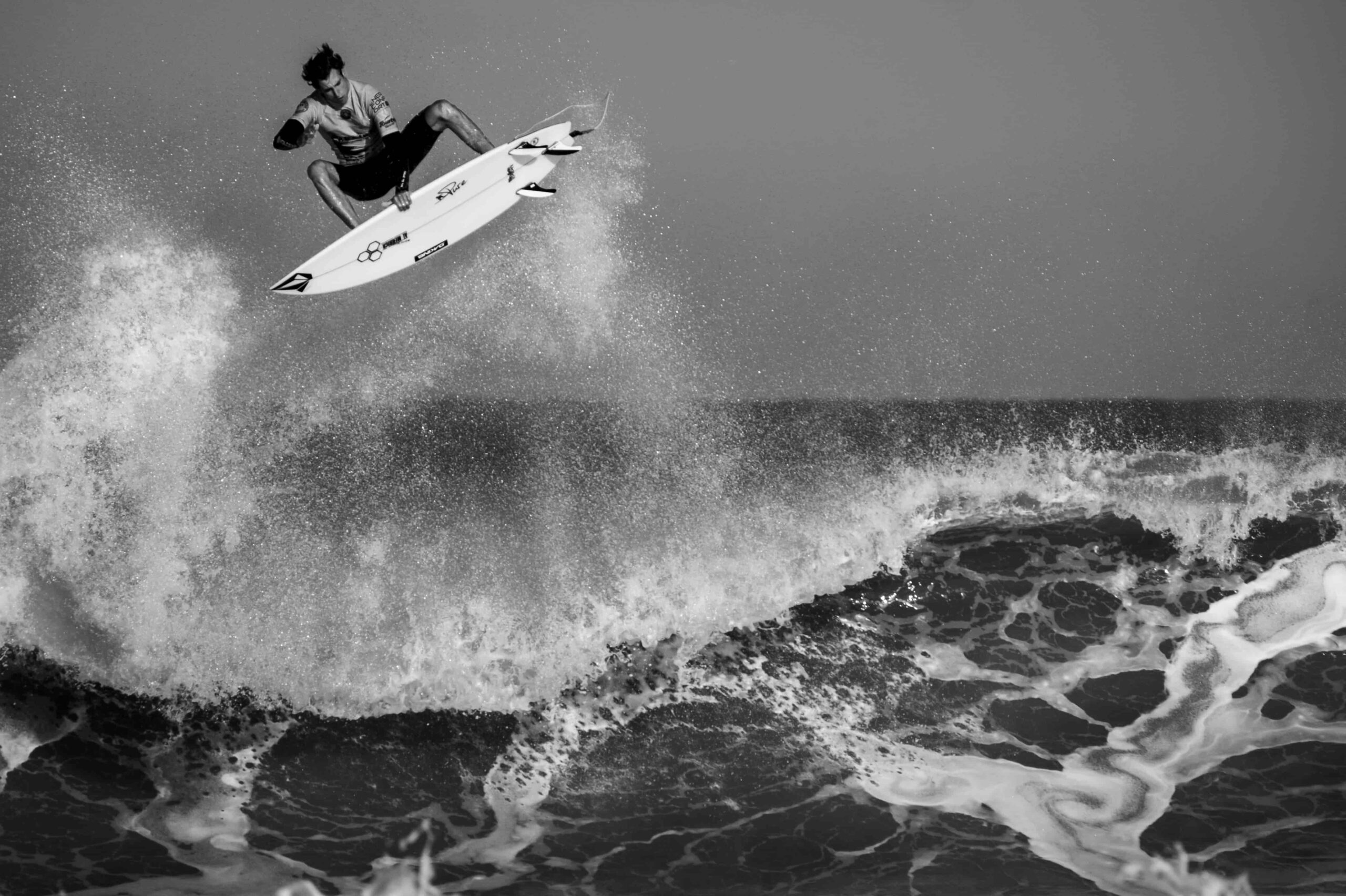Have you ever watched surfers and wondered how they glide across the waves? Surfing is an art form, a dance with the ocean. To learn how to surf, you need a board, a wave, and a fearless spirit. It starts on the sand, learning to balance.
Then, you move to calm water to practice paddling and standing. The real test comes with your first wave. It’s about timing and feeling the ocean’s rhythm. As you push up and ride the wave, you’ll understand why surfers cherish this moment.
This guide will show you the basics, from choosing the right board to catching your first wave. Let’s dive into the world of surfing.
Key Takeaways:
- Surfing is an art that requires essential gear like a stable board and proper safety equipment.
- Essential gear includes a stable soft-top surfboard, leash, wax, sunscreen, and a fitting wetsuit, with optional rash guards and deck pads.
- To be a good beginner surfer, choose small waves, respect etiquette, and persist while avoiding common mistakes.

Essential Gear for Beginner Surfers
Starting your surfing journey is thrilling. But before you hit the waves, you need the right gear. The right equipment can make learning easier and safer. Here’s what you need to get started.
- Best Surfboards for Beginners A beginner surfboard should be stable and forgiving. Look for a soft-top surfboard. It’s often larger, which helps with balance. A soft top also cushions falls, making it ideal for new surfers.
- The Importance of a Good Leash A leash keeps your board close if you fall off. It’s a safety must. Make sure your leash is as long as your surfboard. This detail can save you from getting hit by your board.
- Waxing Your Surfboard for Optimal Grip Wax helps your feet stick to the board. Apply a base coat first. Then, add a top layer for your local water temperature. This step is key for a firm stance.
- Sunscreen and Skin Protection The sun is strong out on the water. Use a waterproof sunscreen. Reapply often. Protecting your skin is crucial. Don’t overlook this.
- Choosing the Right Wetsuit Water temperature dictates your wetsuit choice. Colder waters call for thicker suits. A good fit is vital. It should be snug but not tight.
- Optional: Consider rash guards for skin care and deck pads for better grip.
How to Surf?
Surfing is a thrilling sport. It connects you with the ocean. This guide walks you through the basics.
Step 1: Getting the Proper Surfing Equipment
Start with the right gear. Choose a surfboard suited to beginners. Longboards are stable and buoyant. Get a leash to attach the board to your ankle. It keeps the board close if you fall. Wear a wetsuit if the water is cold. This helps you stay warm.
Step 2: Choosing the Right Surf Spot for Your Skill Level
Look for beaches known for beginner-friendly waves. Avoid spots with large waves. Seek advice from local surf shops or surfers. They know the areas well.
Step 3: Land Practice: Techniques and Exercises
Before hitting the water, warm up on land. Practice the pop-up move. Lay flat on your stomach. In one swift motion, push up with your arms and jump to your feet. Balance is key. Exercise to build strength. Focus on your arms, core, and legs.
Step 4: Paddling Techniques for Efficiency
Lie flat on your board. Keep your body centered. Use long, smooth strokes with your arms. Alternate your arms. This conserves energy.
Step 5: Navigating Through Waves Safely
To get past breaking waves, master the duck dive. Push your board underwater and dive beneath the wave. Resurface on the other side. Keep calm. Always watch the waves.
Step 6: Catching Your First Wave
Paddle out to where the waves break. Face the shore. When a wave approaches, paddle hard. Feel the wave lift you. Timing is crucial. Don’t paddle too early or late.
Step 7: Popping Up on Your Surfboard
As the wave catches you, push up with your arms. Swing your feet under you quickly. Stand with your knees bent. Stay low. Keep your arms out for balance.
Step 8: Riding a Wave Like a Pro
Steer with your body. Look in the direction you want to go. Learn to turn. Use your back foot to guide the board. Enjoy the ride. Smile.
Remember, practice makes perfect. Respect the ocean. Stay safe.
How to Be a Good Beginner Surfer?
Surfing is more than catching waves. It’s about respect—for the ocean and fellow surfers. Here’s how to start right.
Choose Appropriate Waves for Learning
Small, gentle waves are best. They’re easier to manage. Big waves can overwhelm beginners. Start small, gain confidence, and build skills.
Etiquette: Don’t Sit in the Pack
Keep a distance from the group of experienced surfers waiting for waves. Give them space. Wait your turn. This shows respect and keeps the peace.
Etiquette: Don’t Drop In
“Drop in” means taking a wave that someone is already riding. Don’t do it. It’s dangerous and rude. Watch for your turn. Wait for an open wave.
Etiquette: Avoid Back-Paddling
Back-paddling is paddling around someone to get into their spot in the lineup. It’s not fair play. Stick to your position. Wait for waves that come to you.
Stay Out of the Way While Paddling Out
Paddle wide around the surf zone. Avoid the path of riders. If you can’t go around, paddle toward the whitewater. It’s safer for everyone.
Top Beginner Surfer Mistakes
Even the best surfers started as beginners. Avoiding common mistakes helps you improve faster. Let’s dive into some top mistakes.
Picking the Right Surfboard
Beginners often choose short, sleek boards. It’s a mistake. These are hard to balance. Start with a longer, wider board. It makes learning easier.
Proper Surfboard Care
Surfboards need care. Don’t leave your board in the sun. Rin’t it with fresh water after each use? Wax the top for grip. Take care of your board, and it will take care of you.
Importance of Sun Protection
Sunburns and eye damage are real risks. Wear sunscreen. Use zinc for your face. Wear a rash guard. Protect your eyes with UV-blocking sunglasses.
Selecting the Right Spot for Paddling Out
Don’t just paddle out anywhere. Avoid areas with lots of surfers. Look for channels where waves are less frequent. It saves energy and keeps you safe.
Persistence: Don’t Give Up Too Soon
Surfing is tough at first. Waves knock you down. It’s part of the process. Stand up again. Keep trying. Progress comes with persistence.
FAQ
How to Improve Surfing Skills Quickly
To improve quickly, surf regularly in different conditions. Practice pop-ups and balance at home. Watch and learn from others. Consider professional coaching to correct your technique.
Is Learning to Surf Difficult?
Learning to surf can be challenging. It requires balance, timing, and physical fitness. But with consistent practice and a positive mindset, progress is very achievable.
Should You Take Surf Lessons?
Yes, take surf lessons. They provide valuable basics and safety tips. Instructors offer immediate feedback, which helps you improve faster and avoid bad habits.
How Long Does It Take to Learn to Surf?
Learning to surf varies per individual. Basic skills can take a few weeks to learn with regular practice. Mastering surfing takes years of consistent effort and wave time.
Final Thoughts
Surfing is not just a sport; it’s an art form that connects you with the ocean’s rhythm. This ultimate beginner’s guide to “how to surf” has covered everything you need to start your surfing journey: from choosing the right gear and surfboard to mastering essential techniques and etiquette.
Remember, progress comes with persistence, and with the right knowledge and respect for the ocean, you can ride the waves like a pro. So, dive into the world of surfing and enjoy the exhilarating experience it offers.





[…] the basics first. Start with paddling. Then learn to catch waves. Work on your stance. Take it one step at a […]
[…] know How to Surf, Proper surfboard waxing is more than just a routine; it’s the foundation of an enjoyable […]
[…] to dive deep into the world of Surfing? Learn How to Surf and enjoy […]
[…] you wondering How long does it take to learn how to surf? This question intrigues many beginners. Learning to surf typically takes 1-2 lessons for basics and […]
[…] reading? learn more about How to Surf & other water related topics at Blue Ocean […]
[…] For beginners, all-around boards are best. They are versatile and stable. If you plan to race or surf, specialized boards are […]